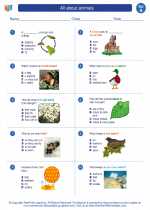Tissue Repair
Tissue repair is the process by which the body restores the structure and function of damaged tissues. It involves a series of complex biological processes that aim to repair and regenerate the injured tissue. There are two main types of tissue repair: regeneration and fibrosis.
Regeneration
Regeneration is the process of replacing damaged or lost cells and tissue with new, healthy cells. This type of tissue repair occurs in tissues with high regenerative capacity, such as the skin, liver, and bone marrow. In regeneration, the injured tissue is replaced with new cells that are identical to the original tissue, allowing for the restoration of normal tissue structure and function.
Fibrosis
Fibrosis, on the other hand, is the process of scar tissue formation in response to tissue injury. This type of tissue repair occurs in tissues with limited regenerative capacity, such as the heart and lungs. During fibrosis, the damaged tissue is replaced with fibrous scar tissue, which helps to provide structural support but does not fully restore the original tissue structure and function.
Study Guide
- What is tissue repair?
- What are the two main types of tissue repair?
- Describe the process of regeneration.
- Which tissues have high regenerative capacity?
- Explain the process of fibrosis.
- Which tissues have limited regenerative capacity?
By understanding the processes of tissue repair, we can gain insights into the body's ability to heal and recover from injuries, as well as the limitations and challenges associated with tissue regeneration.
.◂Science Worksheets and Study Guides First Grade. All about animals

 Worksheet/Answer key
Worksheet/Answer key
 Worksheet/Answer key
Worksheet/Answer key
 Worksheet/Answer key
Worksheet/Answer key
 Worksheet/Answer key
Worksheet/Answer key
 Vocabulary/Answer key
Vocabulary/Answer key
